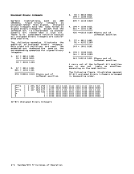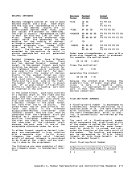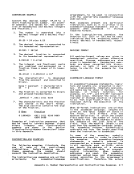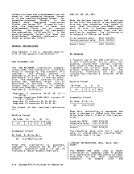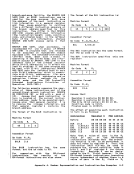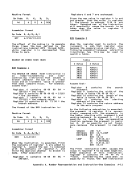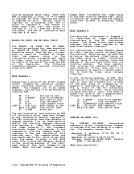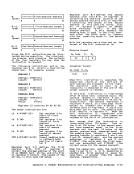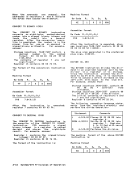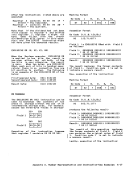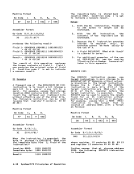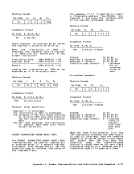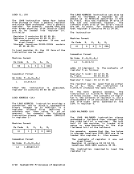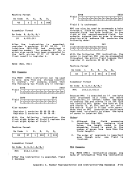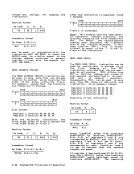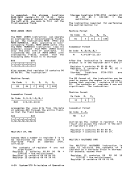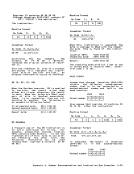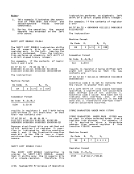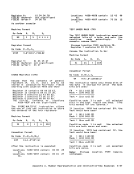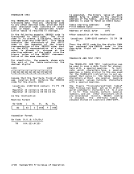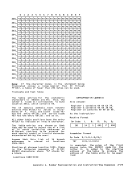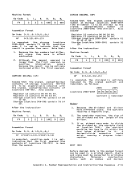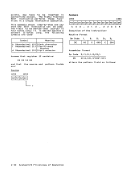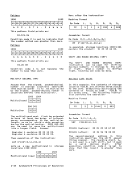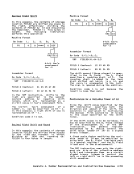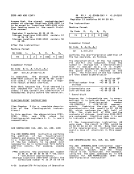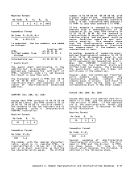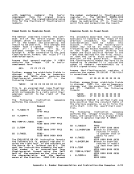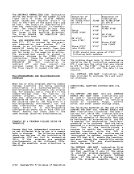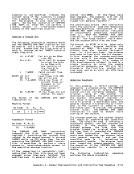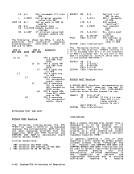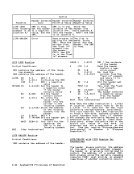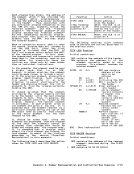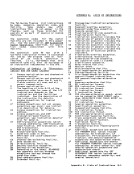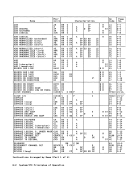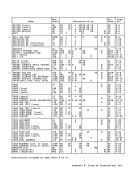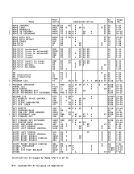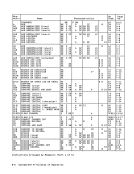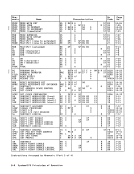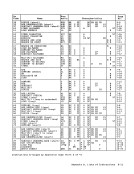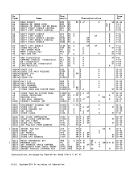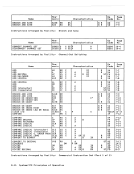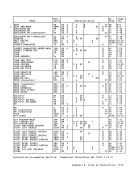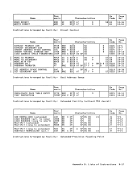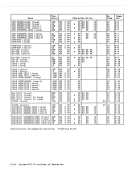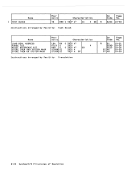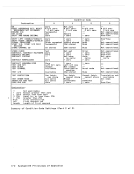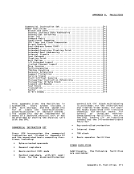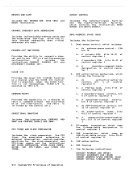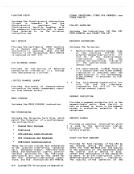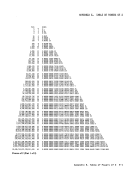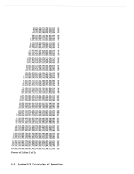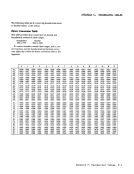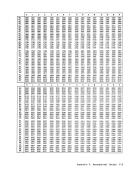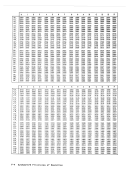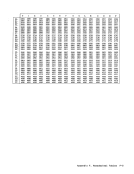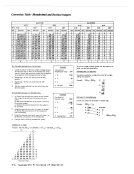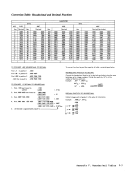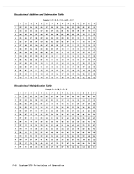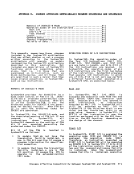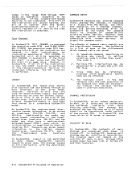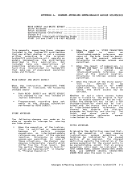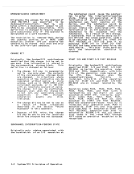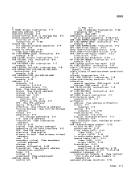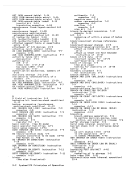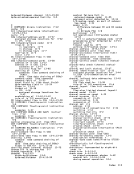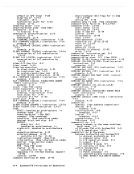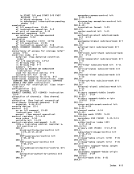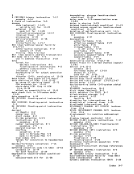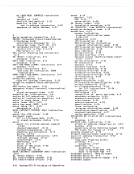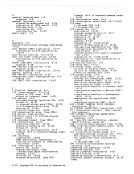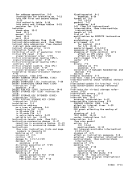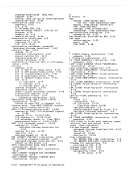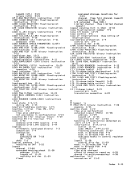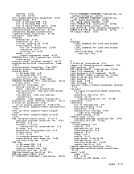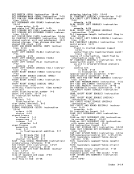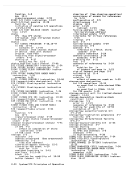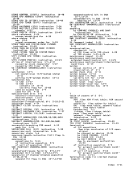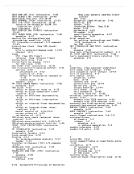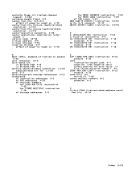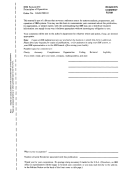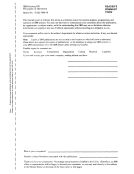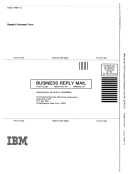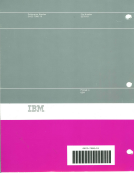and (3) when channel-set switching is
installed, may be presented even when
the channel set is disconnected. In
some models, external secondary reports
due toI/O and channel errors may be
broadcast to allCPUs in the configura
tion.
The third use of external secondary
report is to provide a mechanism for
presenting logout information associated
with errors detected by other external
devices or during operator-initiated
operations. The primary indication in
thiscase is normally by means of the
external device or by an indication to
the operator.Channel Not Operational (CN): Bit 3,
when one, indicates that one or more
channels in the configuration have
entered the not-operational state with
out signaling system reset to their
attached devices. This situation occurs
when these channels have detected an
error of such severity that channel
operations cannot continue. In config
urations with channel-set switching,
channel-not-operational conditions are
reported to allCPUs in the configura
tion even when the channel set is
disconnected. Only those state changes
in the channel which would be seen if
the channel set were connected to aCPU are considered for purposes of this
interruption. The channel-not
operational condition is reported only
in configurations in which all channelshave implemented the recovery-extension
facility.Channel-Control Failure (CC): Bit 4,
when one, indicates that-one or more
channels in the configuration have
entered the not-operational state and
mayor may not have signaled system
reset to their attached devices. This
situation occurs when the channels have
lost power or detected an error of such
severity that channel operations cannot
continue. In configurations with
channel-set switching, channel-control
failure conditions are reported to allCPUs in the configuration, even when the
channel set is disconnected. The
channel-control-failure condition is
reported only in configurations in which
all channels have implemented the
recovery-extension facility.
When the machinecan determine that all
affected channels actually entered the
not-operational state without signaling
system reset to their attached devices,
the channel-not-operational condition is
indicated rather than channel-control
failure.
I/O-Instruction Timeout(ST): Bit 5,
when one, indicates that the execution
time of anI/O instruction has exceeded
the maximum allowed by theCPU. The I/O instruction has been completed by
setting condition code 3. When theCPU is enabled for external-damage machine
check conditions at the time the timeout
occurs, and, if a program interruption
for aPER event does not intervene, the
instruction address stored in the
machine-check oldPSW (if indicated as
valid) points to the instruction follow
ing the last executedI/O instruction.
In this case, the address of the failingI/O instruction (or of EXECUTE) can be
obtained by subtracting 4 from the
instruction address. Timeout of anI/O instruction is reported by means of bit
5 only when theCPU can ensure that the
channel has not signaled system reset to
its attached devices. Depending on the
channel and the timeout condition, the
channel mayor may not be operational.
The I/O-instruction-timeout condition is
reported only in configurations in which
all channels have implemented the
recovery-extension facility.1/0- I n t err u p t ion Timeout ( T T) : Bit 6 , when one, indicates that the channel
portion of anI/O interruption has
exceeded the time limit established by
theCPU and that the CPU has canceled
the interruption. The I/O-interruption
condition mayor may not have been lost,
and information mayor may not have been
stored at the locations of the oldPSW, CSW, and other areas associated with an I/O interruption. The I/O interruption
was not taken; that is, sequential instruction processing continued without
loading theI/O new PSW. Timeout of an I/O interruption is reported by means of
bit 6 only when theCPU can ensure that
the channel has not signaled system
reset to its attached devices. Depend
ing on the channel and the timeout
condition, the channel mayor may not be
operational. The I/O-interruption
timeout condition is reported only in
configurations in which all channels
have implemented the recovery-extension
facility.
Expanded storage Not Operational (XN):
Bit 8, when one, indicates that the
controller associated with some or all
of the expanded storage inthe config
uration has become not operational.
Expanded-storage-not-operational
tions are reported to allCPUs configuration.
condi
in the
Expanded-storageControl Failure (XF):
Bit 9, when one, indicatestha~ a
malfunction has been detected in a
controller associated with some or all
of the expanded storage in the config
uration. When expanded-storage control
failure is indicated, the blocks of the
expanded storage contain either the
proper contents ora preserved error.
Expanded-storage-control-failure
tionsare reported to all CPUs configuration.
condi
in theChapter 11. Machine-Check Handling 11-25
installed, may be presented even when
the channel set is disconnected. In
some models, external secondary reports
due to
broadcast to all
tion.
The third use of external secondary
report is to provide a mechanism for
presenting logout information associated
with errors detected by other external
devices or during operator-initiated
operations. The primary indication in
this
external device or by an indication to
the operator.
when one, indicates that one or more
channels in the configuration have
entered the not-operational state with
out signaling system reset to their
attached devices. This situation occurs
when these channels have detected an
error of such severity that channel
operations cannot continue. In config
urations with channel-set switching,
channel-not-operational conditions are
reported to all
tion even when the channel set is
disconnected. Only those state changes
in the channel which would be seen if
the channel set were connected to a
interruption. The channel-not
operational condition is reported only
in configurations in which all channels
facility.
when one, indicates that-one or more
channels in the configuration have
entered the not-operational state and
mayor may not have signaled system
reset to their attached devices. This
situation occurs when the channels have
lost power or detected an error of such
severity that channel operations cannot
continue. In configurations with
channel-set switching, channel-control
failure conditions are reported to all
channel set is disconnected. The
channel-control-failure condition is
reported only in configurations in which
all channels have implemented the
recovery-extension facility.
When the machine
affected channels actually entered the
not-operational state without signaling
system reset to their attached devices,
the channel-not-operational condition is
indicated rather than channel-control
failure.
I/O-Instruction Timeout
when one, indicates that the execution
time of an
the maximum allowed by the
setting condition code 3. When the
check conditions at the time the timeout
occurs, and, if a program interruption
for a
instruction address stored in the
machine-check old
valid) points to the instruction follow
ing the last executed
In this case, the address of the failing
obtained by subtracting 4 from the
instruction address. Timeout of an
5 only when the
channel has not signaled system reset to
its attached devices. Depending on the
channel and the timeout condition, the
channel mayor may not be operational.
The I/O-instruction-timeout condition is
reported only in configurations in which
all channels have implemented the
recovery-extension facility.
portion of an
exceeded the time limit established by
the
the interruption. The I/O-interruption
condition mayor may not have been lost,
and information mayor may not have been
stored at the locations of the old
was not taken; that is, sequenti
loading the
bit 6 only when the
the channel has not signaled system
reset to its attached devices. Depend
ing on the channel and the timeout
condition, the channel mayor may not be
operational. The I/O-interruption
timeout condition is reported only in
configurations in which all channels
have implemented the recovery-extension
facility.
Expanded storage Not Operational (XN):
Bit 8, when one, indicates that the
controller associated with some or all
of the expanded storage in
uration has become not operational.
Expanded-storage-not-operational
tions are reported to all
condi
in the
Expanded-storage
Bit 9, when one, indicates
malfunction has been detected in a
controller associated with some or all
of the expanded storage in the config
uration. When expanded-storage control
failure is indicated, the blocks of the
expanded storage contain either the
proper contents or
Expanded-storage-control-failure
tions
condi
in the
























































































































































































































































































































































































































































